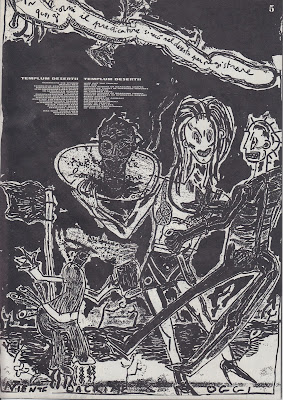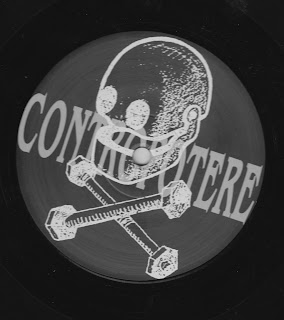French people have been famous worldwide for their arrogance for centuries. While other arrogant dicks from abroad don't fully realize how arrogant they can look (let's get real, we're not the only ones afflicted here, a fearful prospect actually), we, on the other hand, genuinely embrace this objectively embarrassing cultural trait. We, collectively, are very proud of being cocky wankers and actually believe that we are meant to be the Earth's smartest, the cream of the crop, the genuine dog's bollocks, a guiding Light in the world's darkness. Even my postie thinks he is some sort of unacknowledged philosopher and, for propriety's sake, I will not even get into the grandeur of my great-auntie's thought system, which focuses solely on the country's supposed decadence largely caused by so-called "zoomers", when she's had one drink too many. This self-proclaimed intellectual superiority goes along with a distinct tendency to never admit that we are wrong. If we don't know something, there are only three possible options: claim that it is just not worth knowing, outrageously lie and pretend we do know better than you or make up a blend of both (that requires a very large amount of pretense and is for elite French people only, usually politicians, TV experts or other professions where being full of oneself is a compulsory requirement). So if you ask my father about Argentina, he will almost certainly assert that the only good thing about it is that one alright movie with Madonna in it - be careful as he might try to sing the song too - and Roman Riquelme (Maradona did too much drugs and is therefore not a good role model). Would that keep him from thinking he knows it all? Of course it would not.
When you think of typical Argentinian punk music, you may think about bands like 2 Minutos, Boom Boom Kid or Argies (a band that I have seen at least twice for some reason), you think about tunes, 1977-styled punk-rock, unreasonable awkward Ramones worship and contagious energy. And that's assuming you can think about anything at all since Argentina is not exactly a scene that is well-known outside of Latin America. I have already touched upon the subject when writing about Claustrophobia's 2013 demo a few years ago (well, five years ago, fuck me, doesn't time fly), a glorious review that - beside making me the recipient of the much-coveted 2017 Crust Ballon d'Or - allowed me to take a closer look at the more aggressive hardcore side of Argentinian punk and made me realize that I was somewhat familiar with quite a few hard-hitting anarcho or crusty or hardcore punk from that part of the world like Terror y Miseria, Migra Violenta, Disvastacion or Axion//Protesta. And reading the review again made me realize it once again which is quite worrying in terms of memory loss but still a decent ego boost I suppose. Perhaps that's what Alzheimer will look like for me, a constant rediscovery of bands I already know. It could be worse although my partner might disagree and will certainly get a little annoyed with me asking her on an hourly basis if she knew about Ruinas and how great the band was (or is, I will probably think we're still in 2017 and I still have all my hair).
As you must have guessed now, this writeup will be about Ruinas from Buenos Aires. I started the Live by the Crust, Die by the Crust series with the firm, not to mention quixotic, determination to promote and reflect upon 2010's crust music, to take a critical look at it from my ever comfy pedestal located on the last floor of the Terminal Sound Nuisance twin towers. I just had to write something about Ruinas. Not just because I put on two gigs for them in Paris and they are lovely people, but because the band, formed in 2013, can be considered as both the first old-school metallic crust bands from Latin America and the first stenchcore band with lyrics in Spanish (along with the aforementioned Claustrophobia who were already around in 2013). Which is no mean feat. This is not to say that they have not been class crust bands on the continent before, it goes without saying, as Mexico and Brazil have had a long rich history of furious crust with bands like Discordia, Dischord, Under Threat or Desobediencia Civil (and those are just examples from the 1990's) but those were more of the classic crustcore or anarcho varieties and not of the Peaceville stenchcore school like Ruinas. The exact same could be said about Spain which produced a number of good crustcore (and, excruciatingly, neocrust of course) throughout the years but nothing of the old-school crust sort. This is rather odd considering the huge number of mean hardcore music displaying a pronounced love for metal and thrash but that is how it appears to be. But if it is relevant to approach Ruinas as the pioneers of stenchcrust "en español", which in itself does bring something new to the table, it makes just as much sense to see them as one of the best bands from the second generation of the stenchcore revival, their origins notwithstanding. Taking these two elements into account makes Ruinas' position rather unique.
The story of the band actually starts in the mid/late-00's with a band called Horror Humano that originally had two - I believe - future members of Ruinas. The band released a brilliant cdr in 2011 although the eleven songs were recorded in 2007 (talk about the cultural habit of being late to the party). This recording comes highly recommended if you are into pissed raw, almost grinding, political crustcore with extreme vocals (think the Seattle school meets the Tijuana one). In 2011 Horror Humano recorded an Ep for their Chile tour with more of a modern crust touch although we are still in the gruff department, not bad but not as furious as their early shit if you ask me. In 2012 they disbanded and Seba, Pato and David formed Ruinas the next year with a much darker and heavier agenda in mind. Their 2013 demo perfectly illustrated the new path: doom-laden slow-paced apocalyptic stenchcore with anguished vocals and a filthy sound. The demo was strong indeed - so much so that it would be reissued on a split Lp with Russia's Chaosbringer in 2017 - and clearly showed that they knew exactly what they wanted to do and where they intended to move in the grand Crust Evolution Gallery, somewhere between Stormcrow, Axegrinder and Lost with a doomy Bolt Thrower touch just to be on the safe side of heaviness. Followed a split tape in 2014 with Avitacion 101 from Montevideo with a much better production and the first recording with Rocio on vocals, her angry very harsh and gruff vocals becoming one of the band's distinctive traits. This change of personnel might come very handy too during family dinners whenever your great-uncle Bob, an elite twat, claims that women, when it comes to music, are only good at singing tunes about heartbreaks. Just play a Ruinas song to the wanker and that will shut him up immediately without you losing any of your precious energy. You can also kick his arse before proceeding to put him into bed but that's up to you.
The first album of Ruinas was recorded in 2015 although it only came out on vinyl in 2017 (there was a tape version in 2016 though) and it was yet another improvement on the previous recording. Building on the same stenchcore template of doomy-axegrinding-Stormcrow, the new female vocalist made the comparison with 13 or indeed Lost very relevant (Bolt Lostcrow anyone?). The full album format also allowed the band to take its time and further focus on plot, storytelling, transitions and atmospherics, elements that are essential for an old-school album to be successful. As a sign of good taste, the Lp opens with that classic Amebix creepy synth sound, which is not unlike a dog whistle for crusties, before offering a proper old-school stenchdoom number that sounds darker and more miserable than a winter day in Dundee. The album oscillates between slow-paced sludgey, doomed metal-crust and mid-paced filthy stenchcore with a black heaviness always at the wheel, like a ghost ship angrily navigating on a sea of despair and rescuing the drowning punks in the process. I really enjoy the grim ambiance of the record and it is clearly one of my favourites of the era, one that will age well I reckon. And those hopeless vocals can probably raise the dead so it may not be safe to play Ruinas while visiting your gran's grave as she will certainly give you a bollocking from the Other World. If you are looking for the perfect blend of the doom-loving OC crust school of Stormcrow and Mindrot, the axemebixian stenchcore like Filth of Mankind, the female-fronted sludge crust of Lost and the unstoppable riffs of Bolt Thrower, then Ruinas will be your cuppa. And it also works if you are just looking for good, solid metal crust without nitpicking about comparisons and possible influences.
Following this highlight, the band would record a split 12'' Ep with our national crust heroes Lust For Death before unfortunately stopping their activities. The album was released on Neanderthal Stench - a Belgium-based label without which the second stenchcore wave would not have taken off in Europe - and Angry Voice from Germany and I guess you should be able to come across it. The artwork is totally appropriate for the genre and you get a poster which is always a lovely gesture, even though you probably don't have enough space on your walls anyway.



















































